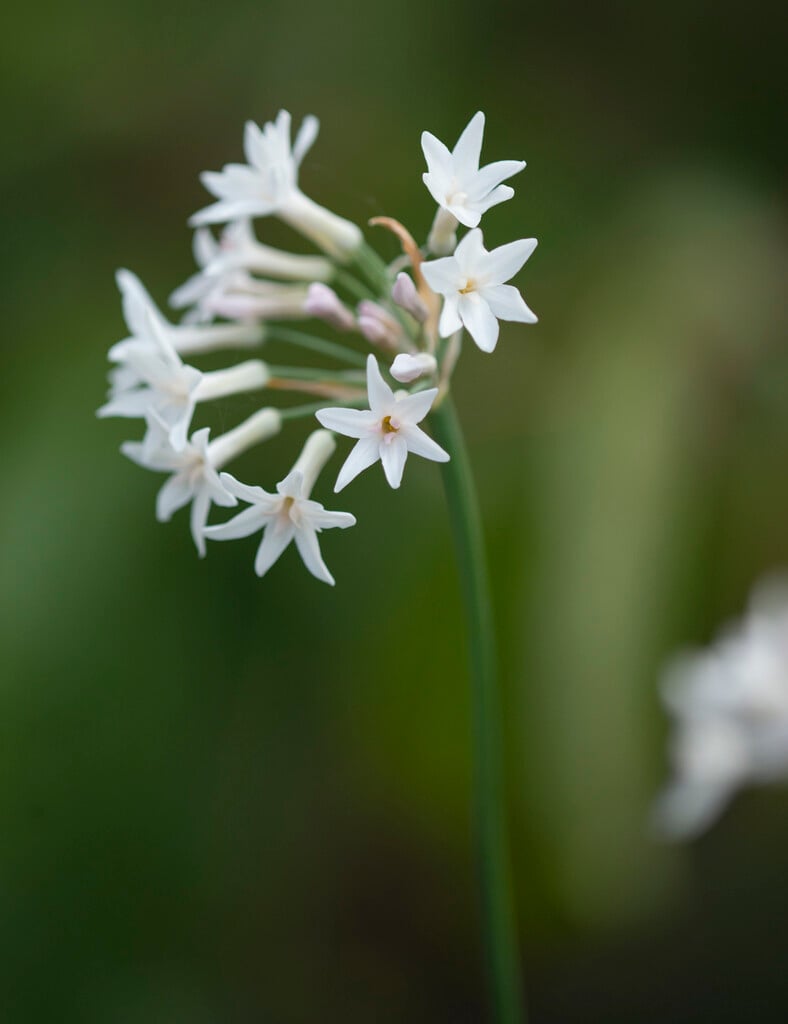Tulbaghia violacea 'Pallida'
society garlic 'Pallida'
A clump-forming perennial to 50cm with corm-like rhizomes and narrowly linear grey-green foliage. Terminal clusters of fragrant, very pale pink to creamy-white flowers are borne from mid-summer to early autumn

Buy this plant
Size
Ultimate height
0.1–0.5 metresTime to ultimate height
1–2 yearsUltimate spread
0.1–0.5 metresGrowing conditions
Moisture
Well–drainedpH
Acid, Alkaline, NeutralColour & scent
| Stem | Flower | Foliage | Fruit | |
| Spring | Grey Silver Green | |||
|---|---|---|---|---|
| Summer | Pink Cream White | Grey Silver Green | ||
| Autumn | Pink Cream White | Grey Silver Green | ||
| Winter |
Position
- Full sun
Aspect
East–facing or South–facing or West–facing
Exposure
Sheltered Hardiness
H3Botanical details
- Family
- Amaryllidaceae
- Native to GB / Ireland
- No
- Foliage
- Deciduous
- Habit
- Clump forming, Tufted
- Genus
Tulbaghia are bulbous or rhizomatous perennials with linear, onion-scented leaves and umbels of small, star-shaped flowers with a small cup-like corona
- Name status
Unresolved
How to grow
Cultivation
Grows well in any moderately fertile, well-drained, loamy soil. Protect in all but the mildest areas over winter with a deep dry mulch or bring container grown plants into an unheated greenhouse
Propagation
Propagate by seed, sown when ripe, in containers in a cold frame or division in spring
Suggested planting locations and garden types
- City and courtyard gardens
- Cottage and informal garden
- Gravel garden
- Patio and container plants
- Rock garden
- Low Maintenance
- Flower borders and beds
- Wall side borders
Pruning
No pruning required
Pests
Generally pest-free
Diseases
Generally disease-free
Get involved
The RHS is the UK’s gardening charity, helping people and plants to grow - nurturing a healthier, happier world, one person and one plant at a time.